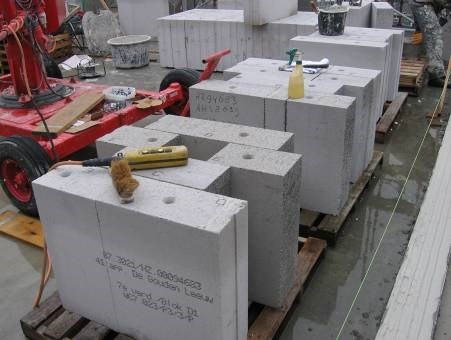L. J. van der Meer1, D. R. W. Martens2 and A. T. Vermeltfoort3
- PhD student, Eindhoven University of Technology, l.j.v.d.meer@tue.nl
- Professor, Chair of Masonry Structures, Eindhoven University of Technology, d.r.w.martens@tue.nl
- Associate Professor Masonry Structures, Eindhoven University of Technology, a.t.vermeltfoort@tue.nl
ABSTRACT
In Western Europe, load-bearing masonry structures are frequently built with calcium silicate elements (CASIELs) combined with thin layer mortar. The height of CASIEL masonry shear walls is limited by the overturning moment. The recent development of high strength CASIELs opens new perspectives. By prestressing masonry, the moment and shear capacity of shear walls can be increased, providing overall stability of higher buildings. Unfortunately, application of this construction method in building practice is limited due to lack of design rules for prestressed masonry in European standards, e. g. Eurocode 6 [1]. Additionally, experimental data on prestress losses due to creep and shrinkage of high strength CASIEL masonry are not yet available. At Eindhoven University of Technology, a project has been set up to systematically investigate the moment and shear capacity of post-tensioned shear walls of CASIEL masonry by means of experimental, numerical and analytical research. Final goals of the project are the development of design rules for post-tensioned (CASIEL) masonry and guidelines for simple and effective post-tensioning systems which ensure overall stability of buildings during construction and working life.
KEYWORDS: CASIEL masonry, shear walls, post-tensioning, prestressing, prestress loss
A1-4



